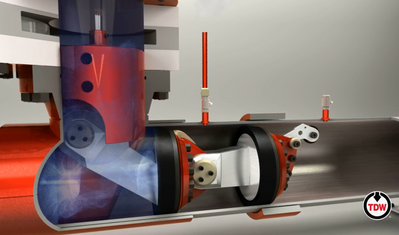Pipeline Isolation Technology Cuts Project Time and Costs in Half
The ability to safely execute repairs and modifications on high pressure pipelines while they remain in service can save operators significant time and expense, but it relies on isolating the work zone and preventing product seepage. Although various double block and bleed isolation options exist, in recent years STOPPLE Train technology has become the preferred method for many operators. In fact, with its 2000th successful insertion, the system is approaching industry standard status.
Double block and bleed security with a single tap
A typical double block and bleed isolation involves tapping the line in two places and inserting temporary block valves along with a drain or vent to evacuate any product between the two seals.
But STOPPLE Train double block and bleed technology is distinct in that it requires just a single tap. Two fully rated independent temporary block valves connected in a train formation are inserted into the tap, reliably providing two workable seals. A bleed port between the two seals is large enough to vent away any gas or viscous liquid that passes the primary seal.
Cutting project costs and time in half
According to Kyle Whiteis, T.D. Williamson (TDW) senior product manager, reducing the number of taps from two to one can cut project costs and schedules in half, with 50 percent fewer fittings and machines on the line and 50 percent less time required to execute the tapping, isolation, and plugging processes.
“Regardless of the economic environment, those financial benefits are extremely important on jobs of all sizes,” Whiteis says. “But the savings are even more pronounced when you’re talking about larger diameter pipelines where changing out the equipment on a conventional double block and bleed configuration could take an enormous amount of time.”
Redundant seals, reduced risk
In addition to reducing time and expenses, STOPPLE Train isolations are also associated with lower risk: not only does the single tap reduce potential leak paths, the reduction in welding, tapping, isolating, and other job site activities can translate to improved safety.
Since TDW introduced the distinctive technology in 2008, it has been used across natural gas and hazardous liquids markets all over the world. The 2000th successful insertion was achieved in June on a natural gas pipeline in Rockingham, NC.











